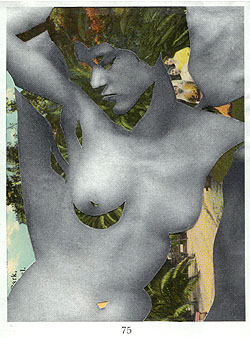CLOAK/3.7i
By the time Trisha started high school, Lake Kenoma was receding. The mulch of unrinsed winters had overfed the streaky
weeds encroaching on its pebbled banks, where deadfalls stained everything like black
steeped tea, while across the lake the unkempt docks seemed longer in their ragged ruffs of burst and
broken boats, and the thinner woods were greyer on the nearer-seeming shore.
|
| That summer her father wrote a letter to the editor about the decline of the
natural attractions of the tourist lake region (excerpts):
|
|
Among worsening bug
problems, the first mosquito plagues in memory. More and louder and uglier and poorer music
on the water, more beer on the water and more brainless speeding. Every fall another rat's litter
of reps from the Smallpox Blanket Development Corporation shows up to make four-wheel drive
powered deals with the local isolates—the white aboriginals, the old weather-scenters and chaw
coots, their widows—all of whom spring finds ensconced indoors at the lips of
new satellite dishes, never to be seen again, as builders overrun what used to be their gun-crazily
guarded acreage and three guys watch a fourth guy work a wood chipper. |
| Her father tuned the views gone flat with wine.
|
What wonder, then, the wholesale turning from this inland stink? Roads scraped
raw through bruised plucked forests never heal—instead, sepsis. Poor underfunded nature,
holding up one poor chipped stained enamelled lake after another to catch the overflow,
understaffed to handle the ceaseless, slowly fatal draining.
   
|
